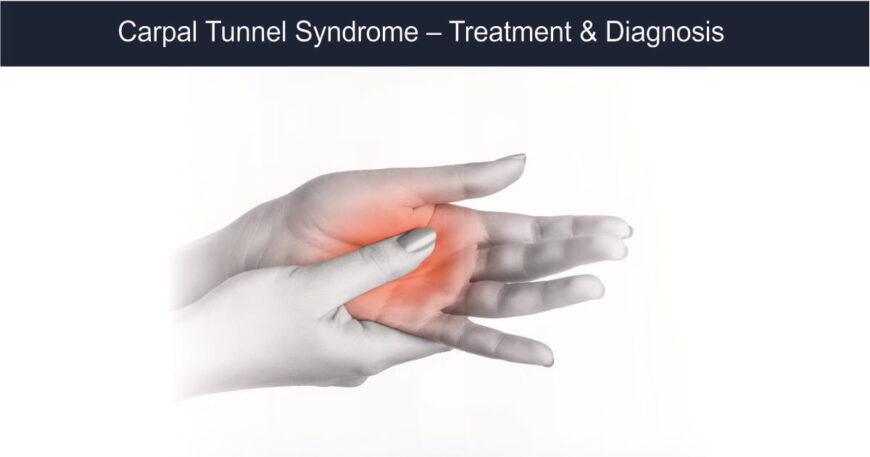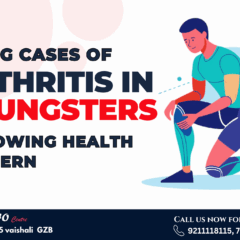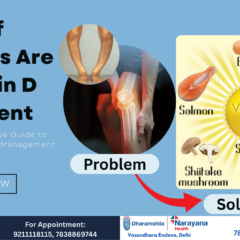
Carpal Tunnel Syndrome – Treatment and Diagnosis
If you are suffering from wrist and hand pain with or without numbness, tingling, or weakness of your hands and fingers, the carpal tunnel could be one of the causes.
What is Carpal Tunnel Syndrome?
Carpal tunnel syndrome can be is caused due to pressure on the median nerve over the wrist region. A Carpal tunnel is a narrow tunnel or path formed by small carpal (Wrist) bones and ligaments on the palmar aspect of the wrist. The median nerve compressed develops pain that is mild to moderate. Lasting for some time, eventually, the pain becomes severe, associated with numbness, tingling, and weakness in the hand and fingers.
What are the causes of carpal tunnel syndrome?
Many factors can cause carpal tunnel syndrome like injury of the wrist, for example, sprain, dislocation, fracture, or infection.
• Like a job that needs a frequent or repetitive movement of the wrist.
• In cases of arthritis, for instance, osteoarthritis or rheumatoid arthritis
• Patients with hormonal imbalances or metabolic disorders like menopause, pregnancy, or thyroid dysfunction.
• Patients suffering from sugar disorders like diabetes mellitus.
What are the symptoms of carpal tunnel syndrome?
Pain is the most common and one of the initial symptoms of carpal tunnel syndrome. It is usually associated with numbness in the fingers and part of the hand. Some patients have the feeling of “pins and needles” in the fingers. Few also feel burning and tingling sensations with varying severity and intensity. At a later stage patient also develop weakness and atrophy of muscle. Symptoms of patients vary according to the severity and duration of nerve compression.
How is carpal tunnel syndrome diagnosed?
Your doctor will diagnose carpal tunnel depending upon your clinical history and examination. There are certain tests like electrodiagnostic studies and MRI neurography which helps in confirming the diagnosis of carpal tunnel syndrome. Other tests may be required to know the contributory factors for carpal tunnel syndrome.
Treatment of carpal tunnel syndrome:
Your doctor will guide you about the treatment which is best for you depending upon your age, work profile, and severity of diseases.
• Splints: Splint is a device that is wrapped around the wrist. It keeps the wrist in one position and prevents movements that can lead to nerve compression.
• Medication. These are certain medicines that help in relieving the symptoms of carpal tunnel syndrome.
• Injections: There are some injections that your doctor injects around the compressed nerve, these injections help in relieving the pressure onto the nerve by decreasing soft tissue swelling.
• Physiotherapy and Exercise: Making ergonomic changes at your workplace will retard the progression of the disease and ease symptoms. Stretching and strengthening exercises are helpful in people. These exercises are supervised by a physiotherapist.
• Surgery: Surgery is done in cases of chronic carpal tunnel with no response from medications and physiotherapy protocols. In surgery, the tight band which is constricting the carpal tunnel is incised thus making room for the nerve. This eases compression on the nerves in the carpal tunnel.
• Surgery of carpal tunnel syndrome evolved over the period. Earlier surgery was done with an open approach but now with advances in the medical field by endoscopic technique.
Open Carpal Tunnel Release: This surgery is done under general or regional anesthesia. Here surgeon cut open the wrist over the palmer aspect. The band of tissue that is compressing the nerve is cut in thus relieving pressure over the nerve.
Endoscopic Carpal Tunnel Release: This is a minimally invasive surgery involving specialized small instruments and an endoscopic system. After local or general anesthesia surgeon puts in a small thin rod-like instrument inside the wrist which has a small camera at the end connecting to the outside big screen. With the help of this endoscope, the surgeon visualizes the tight constricting band. Using specialized endoscopic instruments surgeon relieves pressure over the nerve.
Endoscopic CTS release is better than open CTS release because it utilizes smaller incisions, thus involving smaller stitch scars and lesser post-operative pain. Moreover, endoscopic CTS release is a daycare procedure where the patient gets discharged the same day of surgery.
After surgery small dressing and wrist splint are applied for a few days. After a week and two one can move the wrist. Initially, there may be some pain that can be relieved by oral medications.
Recovery from the symptoms of carpal tunnel depends upon the duration of the problem and changes that have developed in the nerve due to longstanding compression. Pain gets relieved in days and other symptoms like numbness, tingling and weakness may take time to go.
To know more about endoscopic carpal tunnel surgery: youtube/carpal-tunnel-syndrome


